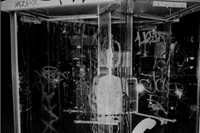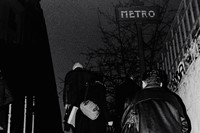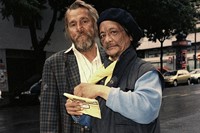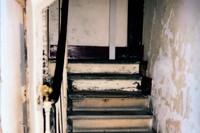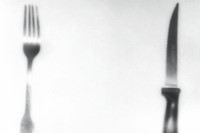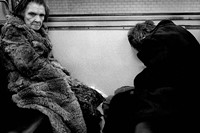Photographer JH Engström talks us through the raw and confrontational images that make up his Sketch of Paris
Acclaimed Swedish photographer JH Engström is a self-confessed Francophile, or 'Paris-ophile' to be precise. His family relocated to the French capital for a brief period during Engström’s childhood and from day one the city held him captivated, so much so that he has returned to it – sometimes for weeks, sometimes for years – throughout his adult life. Propelled by an insuppressible “need” to photograph, Engström has kept his camera superglued to his side during these Parisian sojourns, the result being a vast archive of evocative photographs taken in the city between 1991 and 2012, from which he recently decided to create a book.
Released today, and entitled Sketch of Paris, the publication offers a refreshingly diverse perspective on a well-trodden subject. Shot entirely in analogue, Engström’s is a raw and confrontational world of stolen street and café snapshots juxtaposed with intimate portraits and stark still lifes. Each image tells a new story – an Alsatian is caught mid-leap in a bar; a nude woman lies smoking on a bed; an unwitting couple embrace in a hallway; a dilapidated staircase looms ominously. This element of contrast extends to Engström’s experimentation with different photographic techniques and combination of black-and-white and colour film. "There is an energy created there I think," he says on the subject, "hopefully it throws you in a new angle or direction when you turn the page." This energy is something he achieves with aplomb, as the reader follows him on his voyeuristic, decade-spanning meanderings through the city. Here we speak to Engström about his first impressions of Paris, his difficult editing process, and his time assisting Mario Testino.
Do you remember your first impressions of Paris when you were a child?
It was totally overwhelming. Before that I had never been in a major international city – it was like coming to another universe, I was used to forests! And I was soon very much on my own in the city because we lived outside of Paris, not in the city, so I had to take the train and the metro and buses to get to the Swedish school. I wasn’t scared, it was just overwhelming – there were a lot of people and things happening in the street. I think that feeling never actually left me – I thought about last time I was there. I’m never blasé when I walk the streets of Paris, I still feel the same way as I did when I was 10, just that "wow" feeling.
What's your favorite thing about Paris?
It's not one thing, it's a mix of everything… all these things in one place. I like how you can go from one neighborhood to the other and everything changes; like certain streets you walk down or sit down in – you can sit there happily and things amaze you. And you can not only voyeur, you can also take part. You can be in a café and someone starts talking to you and then you find yourself in the middle of a conversation.
"I’m never blasé when I walk the streets of Paris, I still feel the same way as I did when I was 10, just that "wow" feeling"
Were the people that you photographed mainly strangers or people you knew?
Normally, if you do a book or a project on a city, it's either images of public spaces or it's intimate photographs so I wanted to mix these two things because I wanted it to show a different perspective. Sometimes it’s more private but sometimes it's public places; sometimes it's people that I know, sometimes it's people who I have no idea who they are, some are acquaintances, so it’s all mixed.
At what stage in the process did you start thinking about compiling these images in a book?
I didn’t take these pictures to make the book, these pictures were taken because I had a necessity to and I think photography is a lot about that – taking the picture because you have to. The real work starts when you have to edit it! Then you have to sit down and work. But I’m happy I didn’t take them with the ambition of making a book, I’m happy I took them to keep a record.
Did you enjoy the editing process as a chance to reflect?
When you're looking at contact sheets everything comes back to you – your emotional life, everything, even things that shouldn’t come back. It's not always nice, sometimes it's quite painful actually, but mainly nice.
How was it assisting Mario Testino?
That was the first thing I did actually, work with Mario. That was great, it taught me a lot. He’s a very nice, funny guy and at the same time he was very serious when he was working and I think that’s what he taught me: if you want to do something good you have to be very serious about it. You can have fun at the same time, but if you want it to be good, in the end you have to take it seriously. He also taught me to try to say something that’s true to you – Mario wanted to do these creative pictures in the 90s so he did them and did them well. He had this vision and he made it all the way.
Is there any image in the book that stands out as a moment that was particularly special to you?
No, absolutely not… the book is a whole picture, that’s why it isn't called Sketches of Paris. It’s called Sketch of Paris because it's like one sketch, not 247.
Sketch of Paris by JH Engström is produced by Max Ström, published by Aperture, and is available to buy from today.
Text by Daisy Woodward

